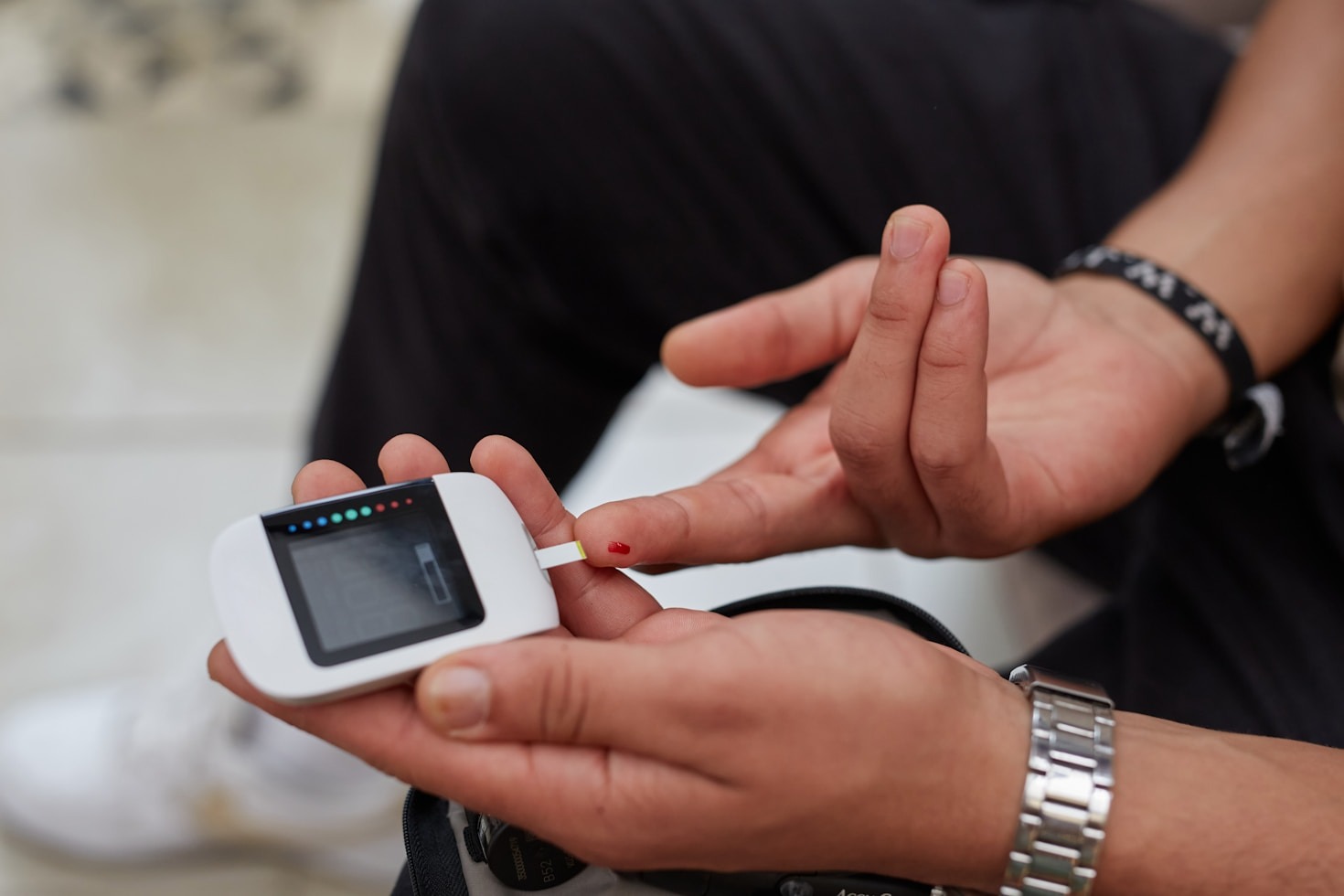Are you tired of feeling sluggish, anxious, or restless? Restoring healthy blood sugar levels can make a significant difference in your daily life. Many women over 30 face frustrations like fatigue, insomnia, or hormonal imbalance due to unstable blood sugar. Finding balance is crucial—not just for your physical health, but for your overall well-being.
In this article, we’ll explore practical steps to regain stability in your blood sugar, allowing you to feel more energetic and centered. You are not alone, and there are solutions tailored just for you!
Understanding Blood Sugar Imbalance
Blood sugar imbalance is like a roller coaster ride. For many women over 30, the fluctuations of glucose levels can lead to fatigue, anxiety, and even insomnia. When your blood sugar levels are constantly shifting, it affects your energy, mood, and overall quality of life. It’s important to grasp what leads to this imbalance. Factors such as stress, unhealthy eating habits, and lack of sleep can derange your body’s ability to maintain optimal blood sugar levels.
When your body doesn’t manage insulin effectively, you might experience high blood sugar (hyperglycemia) or low blood sugar (hypoglycemia). Both can lead to symptoms that feel overwhelming. If you’re nodding along, you’re certainly not alone. Understanding these changes is a crucial first step towards restoring balance.
Common Symptoms of Blood Sugar Issues
Recognizing the symptoms of blood sugar imbalances is essential for taking control of your health. Here are some common signs to watch for:
- Fatigue: Feeling exhausted even after a full night’s sleep?
- Anxiety: Do you often feel jittery or anxious?
- Cravings: Are sugar cravings dictating your snack choices?
- Difficulty Concentrating: Struggling to focus on tasks or remember details?
- Sudden Mood Swings: Do you feel emotionally unsteady?
- Physical Symptoms: Headaches, irritability, or digestive issues?
If you’re experiencing one or more of these symptoms, it’s a sign that your blood sugar levels may need attention. The good news? There are practical steps you can take to regain your balance.
The Connection Between Diet and Blood Sugar
Your diet plays a crucial role in symptoms related to blood sugar. Consuming a balanced diet that focuses on whole foods can help stabilize your levels.
- Choose Complex Carbs: Opt for whole grains, legumes, and vegetables.
- Limit Sugar Intake: Try to minimize processed foods and added sugars.
- Incorporate Protein: Include sources like lean meats, fish, eggs, and legumes to help maintain energy.
- Add Healthy Fats: Nuts, seeds, and avocados can help slow digestion, stabilizing sugar levels.
A thoughtful approach to eating not only fuels your body but can also enhance your mood and energy levels.
Effective Lifestyle Changes to Implement
Making small lifestyle changes can create a big impact when it comes to blood sugar management:
- Stay Hydrated: Drink plenty of water throughout the day. Hydration aids in digestion and can improve energy levels.
- Regular Meal Timing: Aim to eat balanced meals and snacks at regular intervals to maintain steady blood sugar levels.
- Mindful Eating: Pay attention to your hunger cues and eat thoughtfully to prevent overeating.
- Avoid Skipping Meals: Regular meals help prevent extreme fluctuations in blood sugar.
Embracing these changes can provide the support your body needs. Even small adjustments can lead to remarkable changes in how you feel.
Simple Meal Planning for Blood Sugar Stability
Meal planning is a powerful tool. It helps you make mindful choices, ensuring that your meals focus on nutrition rather than convenience.
Here are some simple tips for effective meal planning:
- Plan Ahead: Spend some time each week planning your meals. It reduces last-minute unhealthy choices.
- Prep Ingredients: Wash, cut, and prepare fruits and vegetables in advance for easy access.
- Include Variety: Experiment with different recipes and foods to keep meals interesting.
- Snack Smart: Keep healthy snacks on hand to manage cravings.
By preparing meals mindfully, you take control back from your cravings and ensure your body receives the nutrients it deserves.
The Role of Exercise in Blood Sugar Management
Exercise is not just about losing weight; it plays a vital role in blood sugar management as well. Moving your body can help improve insulin sensitivity and regulate your glucose levels.
Here are some forms of exercise to consider:
- Walking: A brisk 30-minute walk can do wonders.
- Strength Training: Building muscle mass helps utilize glucose more effectively.
- Yoga: Reduces stress levels, helping to balance hormones.
- Mix it Up: Incorporate a variety of activities you enjoy to stay motivated.
Once you find what you enjoy, it becomes less of a chore and more of a lifestyle.
Stress Reduction Techniques for Better Balance
Stress can create a cycle of blood sugar issues. When you’re stressed, your body releases hormones that can lead to elevated blood sugar levels. Here are ways to reduce stress:
- Deep Breathing: Take a few minutes each day to focus on your breath.
- Meditation: Regular mindfulness practice can decrease stress and improve mental clarity.
- Journaling: Write your thoughts and feelings down to process emotions.
- Connect with Nature: Spend time outdoors to freshen your mind and reduce anxiety.
Caring for your mental health is just as important as caring for your physical health. Each technique can help you feel more grounded and in control.
How Sleep Affects Blood Sugar Levels
Sleep is crucial for overall health, yet it’s often compromised. Poor sleep can lead to insulin resistance, which impacts blood sugar levels. Here are ways to improve your sleep:
- Create a Sleep Routine: Go to bed and wake up at the same time every day.
- Limit Screens Before Bed: Reduce exposure to blue light at least an hour before sleeping.
- Make Your Room Comfortable: Create a dark, cool, and quiet environment for better sleep.
- Relaxation before Bed: Engage in calming activities, like reading or gentle stretching.
Quality sleep can lead to better mood and improved energy levels. Priority should be given to how and when you sleep.
Mindfulness Practices for Emotional Well-Being
Mindfulness is essential for emotional well-being. Practicing mindfulness can help curb emotional eating and promote a healthier mindset towards food. Here’s how to incorporate it into your life:
- Practice Being Present: Focus on current sensations, thoughts, and feelings without judgment.
- Meditation Apps: Tools like Headspace or Calm can guide your practice.
- Mindful Eating: Savor each bite, and pay attention to what you eat.
- Regular Gratitude: Write down things you’re grateful for, enhancing your mental outlook.
Integrating mindfulness into your daily routine can help you embrace a calmer, more connected life.
Success Stories: Women Who Restored Their Balance
Many women have walked this path and have inspiring stories of success. They’ve faced challenges, but through gradual changes, they’ve reclaimed their health and happiness:
- Anna: After years of fatigue, Anna transformed her diet and incorporated daily walks. She now feels energized and confident.
- Beth: Struggling with anxiety, Beth included yoga and meditation into her routine. This shift has brought peace in her life.
- Clara: Clara learned to recognize her triggers. With mindful eating and regular meal prep, she’s taken control of her cravings.
- Diana: After prioritizing sleep, Diana noticed a significant improvement in her mood and overall health.
Their stories show that it’s absolutely possible to shift your health in a positive direction. You can restore balance and refresh your perspective, just like they did.
Remember, taking small, manageable steps can lead to significant changes over time. You are capable of experiencing better health and a renewed sense of well-being. Explore the solutions that can turn your journey towards balance into reality.










